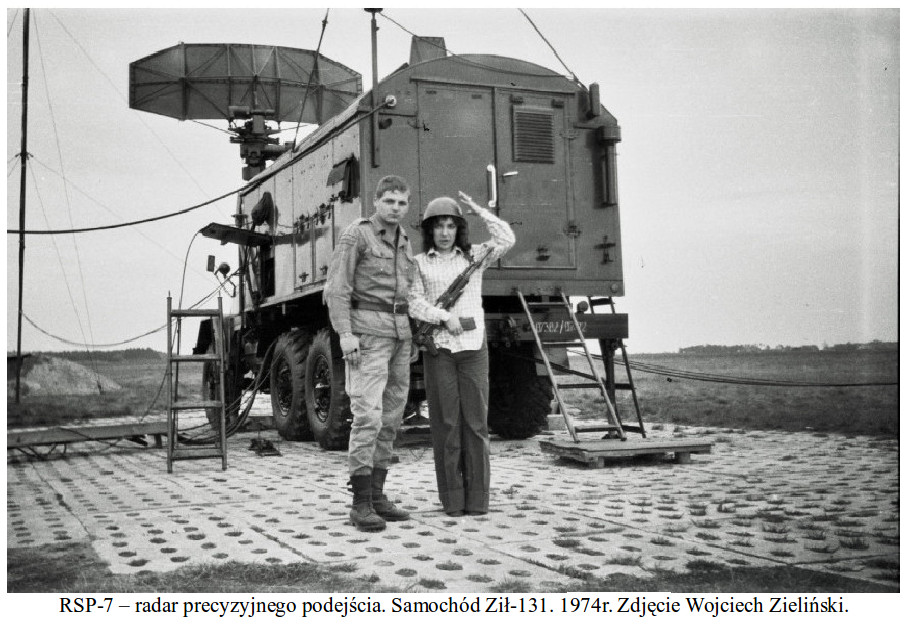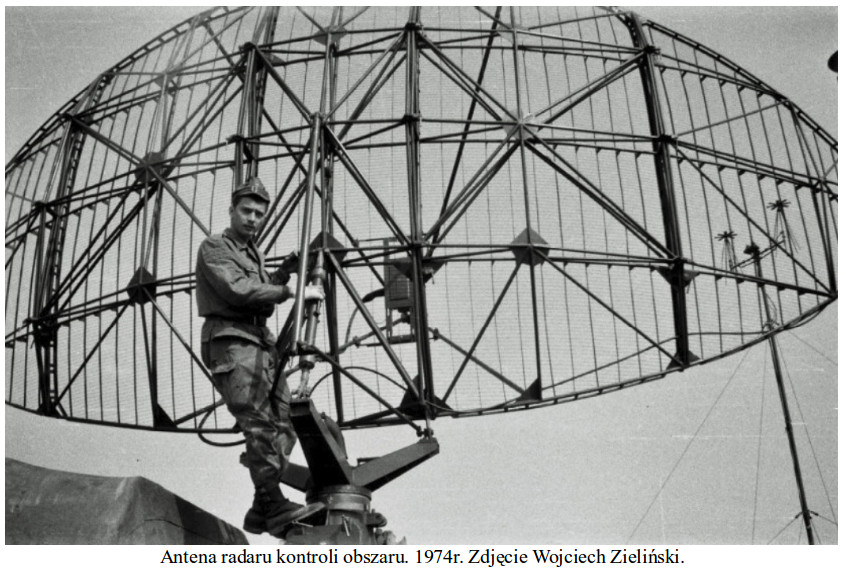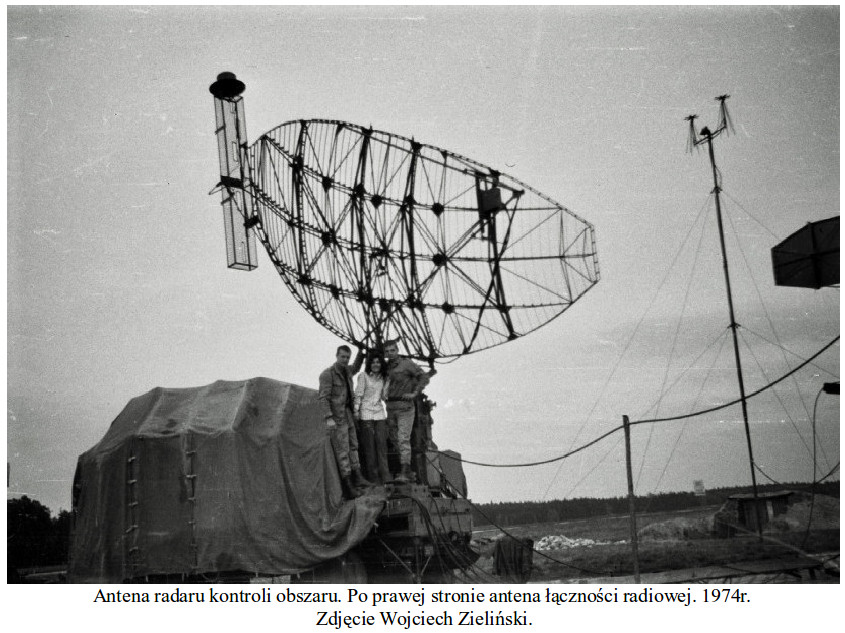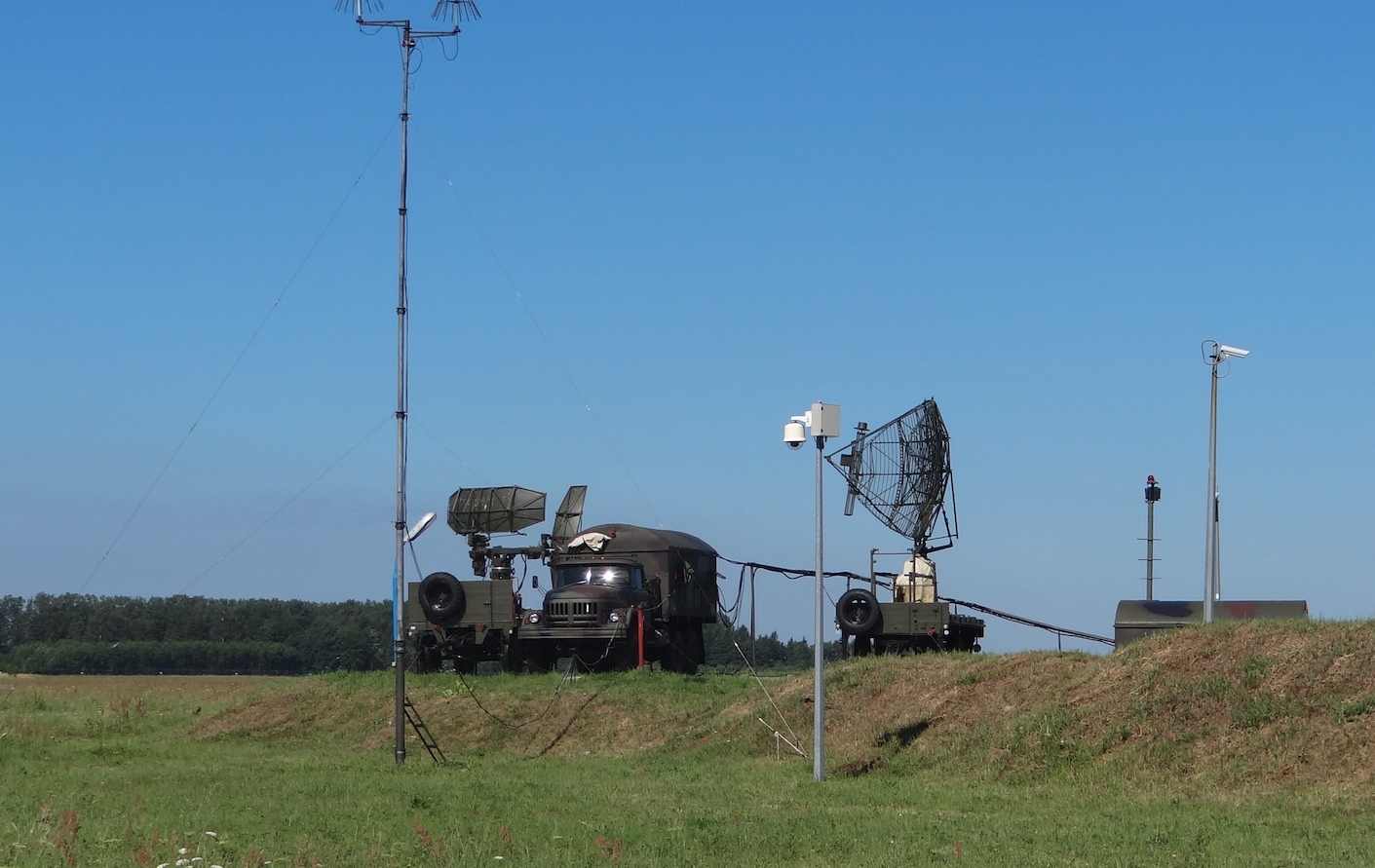Kraków 2014-12-27
In the field of flights of the Air Regiment in the 70's of the 20th century.
Radiolocation.
NDB
The landing support system is described in detail in the article - "Outline of the history of air navigation. Radiolocation at the airport during landing. " In this part, we will only provide additional information on what such a punk looks like in Poland, compared to the flood of photos of such objects in the Moscow state shown on the Internet after the Smolensk attack. As you can see in the photo - The facility is fenced, closed, and provided with appropriate warning signs. The automatic equipment is placed in a special metal container. The NDB antenna was stretched between the two masts.

Radiolocation equipment in the Aviation Regiment.
The turn of the 60s / 70s is the period of introducing radiolocation stations into the equipment of the Regimental Airports in order to increase the level of security and the ability to perform tasks in difficult weather conditions (TWA). It should be noted right away that this equipment is not used to detect the enemy. This function has been performed by radio-technical (radiolocation) and missile forces since the end of the 50s. The above-mentioned NDB system assisted landing, but did not give a picture of the air situation in the further area of the airport. The experience gained from other armies has shown that an effective radar station at a military airport should consist of two elements; from the aerodrome area radar and precision landing approach radar. Such a stand was called RSL (Radiolocation Landing System), and in Russian the RSP.





The CCCP has developed several models of RSL (Radiolocation Landing System) sets. The known ones include the RSP-6. In this model, attempts were made to place all the antennas on one vehicle. However, it turned out that such a vehicle was difficult to stabilize by anchoring with lashings. The rotating area control antenna made the entire vehicle sway, causing the PAR radar antennas to malfunction.
In Poland, the RSP-8 sets were used the longest, which can be found at several military airports. The set consists of three Ził-131 cars with booths housing the apparatus, two trailers (one PAR antenna on one, area control antenna on the other), 1-2 transport trailers. Apart from radiolocation stations, an important equipment is a radio communication radio station. Usually two. The service is in the strength of the team.
The last set used in the Polish Army was the RSP-10 system, which was also modernized and received the designation RSP-10 MN. The RSP-10 MN radar landing system allows, in accordance with the instructions, to lead the aircraft to a height of 100–150 m above the touchdown zone level. In practice, however, different parameters are used for different airports. The accuracy of the system is 10-40 m, but depends on the experience of the operator.

Written by Karol Placha Hetman
